What is Checkpcsecurity.com?
Checkpcsecurity.com pop-ups are a SCAM that manipulates unsuspecting users into believing there is a virus (trojan, worm, other security threat) on their computer. Cyber-criminals regularly use such social engineering tactics to pressure users into downloading and installing software that’s indeed useless or malicious.
Checkpcsecurity.com pop-ups can invade computers, Android/Apple devices when users land on deceptive websites — by following a link from push notifications, spam emails or mistyping a URL. They might be served to users via Adware, PUPs (potenially unwanted programs) users can unwittingly install if they download free or pirated versions of software.
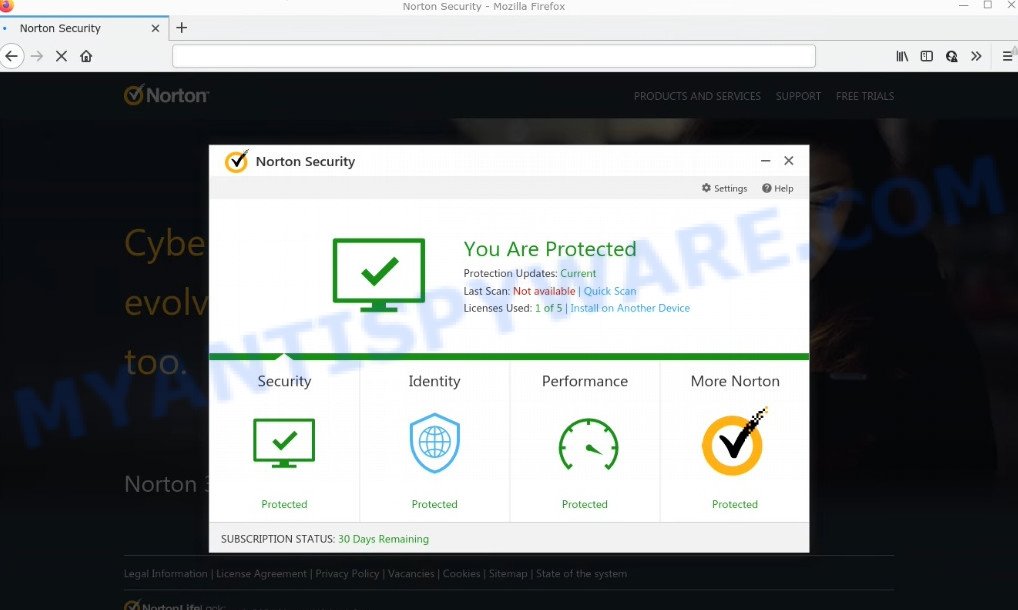
Checkpcsecurity.com pop-ups are a SCAM
QUICK LINKS
Typically, scam sites first check the user’s IP address to determine their geolocation. Scammers, having determined the user’s location, can use various scam schemes, change the page language and redirect the user to other dangerous sites. Checkpcsecurity.com displays a fake message that the computer is infected with viruses and other security threats. This scam instructs users to click “Proceed..” to remove the found malware.
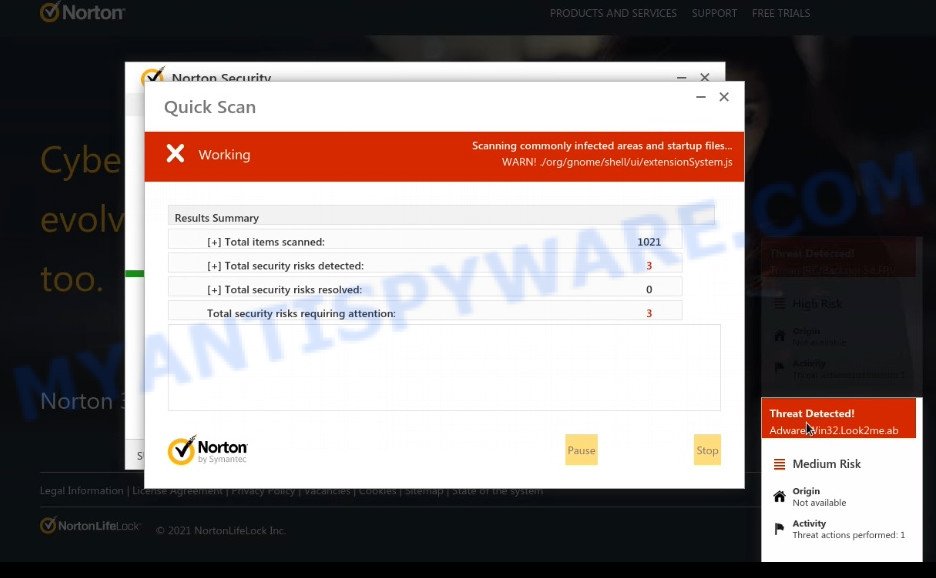
Checkpcsecurity.com performs a fake Norton security system scan
After clicking, users are redirected to another page that offers to purchase antivirus software. In this particular case, users are shown a legitimate Norton antivirus page offering to purchase the Norton 360 subscription. Scammers behind Checkpcsecurity.com and similar sites earn a commission for each purchased Norton subscription. Of course, Norton and other antivirus companies do not allow affiliates to promote their products using social engineering tricks, misleading methods, and deceptive advertising. However, despite this ban, scammers continue to advertise Norton Antivirus and other antivirus companies’ products.
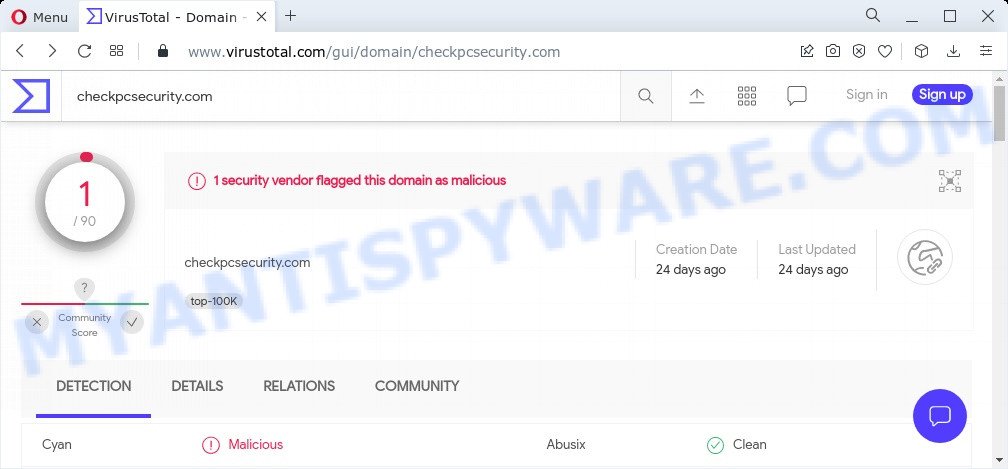
1 security vendor flagged the Checkpcsecurity.com domain as malicious
Checkpcsecurity.com can display a ‘show notifications’ pop-up that attempts to get users to click the ‘Allow’ button to allow its push notifications. These push notifications will essentially be advertisements for ‘free’ online games, fake prizes scams, dubious web browser extensions, adult web-sites, and fake downloads.
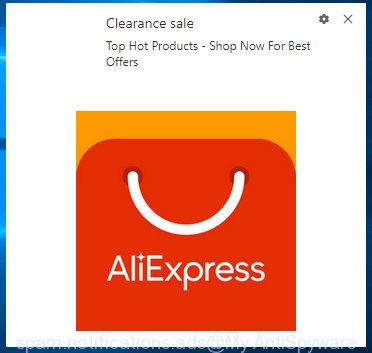
How to protect against Checkpcsecurity.com scam
To avoid becoming a victim of scammers, it is important to always keep in mind:
- There are no sites that can detect viruses and other security threats.
- Never install software promoted by scam sites, as it can be useless, and besides, it can be dangerous for you and your computer.
- Close Checkpcsecurity.com as soon as it appears on your computer screen. Scammers can prevent you from closing it in various ways. In such cases, close your browser using Task Manager or restart your computer. If the next time you launch the browser, it prompts you to restore the previous session, abandon it, otherwise this scam will reopen on your screen.
- Use an ad blocker when browsing the internet. It can block known scam sites and protect you from scammers.
Threat Summary
| Name | Checkpcsecurity.com |
| Type | scam, phishing, fake virus alerts |
| Symptoms |
|
| Removal | Checkpcsecurity.com removal guide |
McAfee SECURITY ALERT, Microsoft Windows Virus Alert, Norton Antivirus 2021 Update, Your PC is infected with 5 viruses are other scams designed to trick visitors into installing untrustworthy software or calling fake tech support. Some of these scams are positioned as a legitimate Microsoft, Norton, McAfee sites, but in fact have nothing to do with Microsoft, Norton and McAfee.
The Checkpcsecurity.com pop ups are caused by malicious advertisements on websites you visit, browser notifications or Adware. Browser (push) notifications are originally developed to alert the user of recently published news. Cyber criminals abuse ‘push notifications’ by displaying unwanted ads. These ads are displayed in the lower right corner of the screen urges users to play online games, visit questionable web-pages, install web browser add-ons & so on.
Adware is a type of malicious software which displays unwanted ads to the user of a PC. The ads caused by adware are sometimes in the form of a sponsored link, pop up and sometimes in an unclosable window or even fake alert.
How does Adware get on computers
Usually, adware software gets into computers as part of a bundle with free software, sharing files and other unsafe apps which you downloaded from the Internet. The creators of adware pays software makers for distributing adware software within their apps. So, additional apps is often included as part of the setup file. In order to avoid the installation of any adware: choose only Manual, Custom or Advanced install mode and reject all bundled software in which you are unsure.
How to remove Checkpcsecurity.com pop-ups (Adware removal guide)
In the guidance below we will have a look at the adware and how to get rid of Checkpcsecurity.com from IE, MS Edge, Google Chrome and Mozilla Firefox web browsers for MS Windows OS, natively or by using a few free removal utilities. Certain of the steps will require you to restart your computer or exit this web page. So, read this guidance carefully, then bookmark this page or open it on your smartphone for later reference.
To remove Checkpcsecurity.com, execute the steps below:
- Manual Checkpcsecurity.com scam removal
- Automatic Removal of Checkpcsecurity.com pop ups
- Stop Checkpcsecurity.com pop-ups
Manual Checkpcsecurity.com scam removal
In most cases, it’s possible to manually remove Checkpcsecurity.com pop-ups. This method does not involve the use of any tricks or removal tools. You just need to restore the normal settings of the PC system and web-browser. This can be done by following a few simple steps below. If you want to quickly remove scam pop-ups, as well as perform a full scan of your PC system, we recommend that you run adware removal utilities, which are listed below.
Delete PUPs through the Windows Control Panel
First method for manual adware removal is to go into the Microsoft Windows “Control Panel”, then “Uninstall a program” console. Take a look at the list of applications on your personal computer and see if there are any dubious and unknown software. If you see any, you need to uninstall them. Of course, before doing so, you can do an World Wide Web search to find details on the program. If it is a potentially unwanted program, adware software or malicious software, you will likely find information that says so.
Windows 8, 8.1, 10
First, click the Windows button
Windows XP, Vista, 7
First, press “Start” and select “Control Panel”.
It will show the Windows Control Panel similar to the one below.

Next, click “Uninstall a program” ![]()
It will show a list of all applications installed on your computer. Scroll through the all list, and delete any dubious and unknown applications. To quickly find the latest installed apps, we recommend sort software by date in the Control panel.
Delete Checkpcsecurity.com popups from Internet Explorer
In order to recover all web-browser new tab, homepage and search engine you need to reset the Internet Explorer to the state, which was when the MS Windows was installed on your PC.
First, launch the Internet Explorer, then click ‘gear’ icon ![]() . It will show the Tools drop-down menu on the right part of the web-browser, then press the “Internet Options” as displayed in the following example.
. It will show the Tools drop-down menu on the right part of the web-browser, then press the “Internet Options” as displayed in the following example.

In the “Internet Options” screen, select the “Advanced” tab, then press the “Reset” button. The IE will display the “Reset Internet Explorer settings” dialog box. Further, click the “Delete personal settings” check box to select it. Next, click the “Reset” button as shown in the following example.

Once the process is done, press “Close” button. Close the Microsoft Internet Explorer and restart your PC system for the changes to take effect. This step will help you to restore your web browser’s newtab page, search engine and start page to default state.
Remove Checkpcsecurity.com scam from Chrome
If you have adware software problem or the Chrome is running slow, then reset Chrome settings can help you. In the steps below we will show you a method to reset your Google Chrome settings to default state without reinstall. This will also help to remove Checkpcsecurity.com popups from your web browser.

- First, launch the Chrome and click the Menu icon (icon in the form of three dots).
- It will open the Chrome main menu. Choose More Tools, then click Extensions.
- You’ll see the list of installed extensions. If the list has the plugin labeled with “Installed by enterprise policy” or “Installed by your administrator”, then complete the following steps: Remove Chrome extensions installed by enterprise policy.
- Now open the Google Chrome menu once again, click the “Settings” menu.
- Next, click “Advanced” link, that located at the bottom of the Settings page.
- On the bottom of the “Advanced settings” page, click the “Reset settings to their original defaults” button.
- The Chrome will show the reset settings dialog box as on the image above.
- Confirm the internet browser’s reset by clicking on the “Reset” button.
- To learn more, read the blog post How to reset Google Chrome settings to default.
Remove Checkpcsecurity.com from Mozilla Firefox by resetting web-browser settings
If the Mozilla Firefox browser program is hijacked, then resetting its settings can help. The Reset feature is available on all modern version of Firefox. A reset can fix many issues by restoring Mozilla Firefox settings such as new tab page, startpage and search engine to their original state. However, your saved bookmarks and passwords will not be lost. This will not affect your history, passwords, bookmarks, and other saved data.
Launch the Mozilla Firefox and press the menu button (it looks like three stacked lines) at the top right of the web browser screen. Next, click the question-mark icon at the bottom of the drop-down menu. It will open the slide-out menu.

Select the “Troubleshooting information”. If you’re unable to access the Help menu, then type “about:support” in your address bar and press Enter. It bring up the “Troubleshooting Information” page as shown in the figure below.

Click the “Refresh Firefox” button at the top right of the Troubleshooting Information page. Select “Refresh Firefox” in the confirmation prompt. The Mozilla Firefox will begin a process to fix your problems that caused by the Checkpcsecurity.com adware. After, it’s complete, press the “Finish” button.
Automatic Removal of Checkpcsecurity.com pop ups
We have compiled some of the best adware removing utilities that can scan for and remove Checkpcsecurity.com pop-ups, malicious browser add-ons and PUPs.
How to get rid of Checkpcsecurity.com pop up scam with Zemana
If you need a free tool that can easily remove Checkpcsecurity.com pop-ups, then use Zemana AntiMalware (ZAM). This is a very handy program, which is primarily designed to quickly find and get rid of adware and malware infecting web browsers and modifying their settings.
- Download Zemana from the link below.
Zemana AntiMalware
164801 downloads
Author: Zemana Ltd
Category: Security tools
Update: July 16, 2019
- Once you have downloaded the installation file, make sure to double click on the Zemana.AntiMalware.Setup. This would start the Zemana Free installation on your personal computer.
- Select setup language and press ‘OK’ button.
- On the next screen ‘Setup Wizard’ simply click the ‘Next’ button and follow the prompts.

- Finally, once the installation is done, Zemana Free will launch automatically. Else, if doesn’t then double-click on the Zemana icon on your desktop.
- Now that you have successfully install Zemana, let’s see How to use Zemana Anti-Malware (ZAM) to get rid of Checkpcsecurity.com scam from your computer.
- After you have launched the Zemana Free, you’ll see a window like below, just click ‘Scan’ button to start scanning your personal computer for the adware software.

- Now pay attention to the screen while Zemana AntiMalware scans your computer.

- After the scan get completed, Zemana Anti-Malware will display a screen which contains a list of malware that has been detected. When you’re ready, click ‘Next’ button.

- Zemana Anti Malware may require a restart computer in order to complete the Checkpcsecurity.com pop-up scam removal procedure.
- If you want to fully remove adware from your computer, then click ‘Quarantine’ icon, select all malicious software, adware, potentially unwanted programs and other threats and click Delete.
- Reboot your computer to complete the adware software removal procedure.
Use HitmanPro to remove Checkpcsecurity.com pop-ups
Hitman Pro is a free application which created to delete malicious software, potentially unwanted applications, browser hijackers and adware from your computer running Windows 10, 8, 7, XP (32-bit and 64-bit). It’ll allow to find and remove adware that causes Checkpcsecurity.com popup, including its files, folders and registry keys.
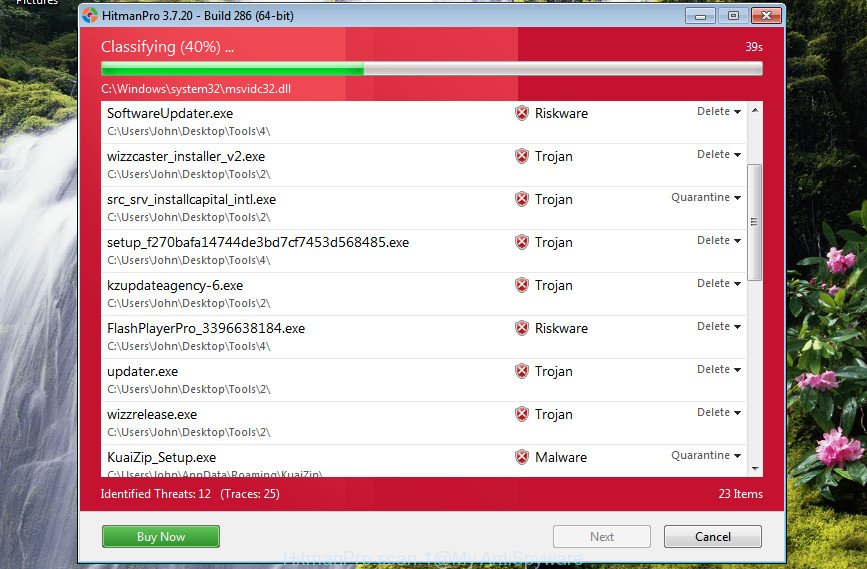
- Download Hitman Pro by clicking on the following link. Save it on your Windows desktop or in any other place.
- After the downloading process is done, run the HitmanPro, double-click the HitmanPro.exe file.
- If the “User Account Control” prompts, click Yes to continue.
- In the HitmanPro window, click the “Next” . Hitman Pro program will scan through the whole device for the adware that causes multiple unwanted pop ups. A system scan may take anywhere from 5 to 30 minutes, depending on your computer. While the Hitman Pro is scanning, you can see number of objects it has identified either as being malware.
- When the system scan is complete, Hitman Pro will display a screen which contains a list of malicious software that has been detected. You may remove threats (move to Quarantine) by simply press “Next”. Now, click the “Activate free license” button to begin the free 30 days trial to delete all malware found.
Use MalwareBytes Anti-Malware to delete Checkpcsecurity.com popups
If you’re having problems with Checkpcsecurity.com removal, then check out MalwareBytes Anti-Malware. This is a tool that can help clean up your device and improve your speeds for free. Find out more below.
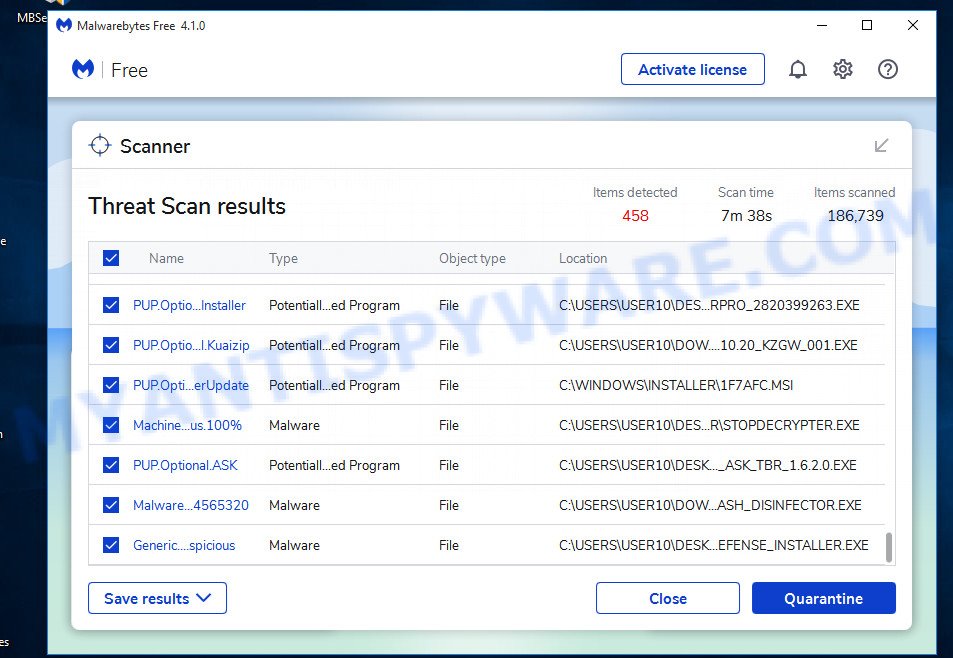
Click the following link to download the latest version of MalwareBytes Free for Microsoft Windows. Save it directly to your Windows Desktop.
327053 downloads
Author: Malwarebytes
Category: Security tools
Update: April 15, 2020
Once the downloading process is complete, run it and follow the prompts. Once installed, the MalwareBytes Free will try to update itself and when this process is finished, press the “Scan” button to perform a system scan for the adware that causes Checkpcsecurity.com pop-ups in your web browser. This procedure can take quite a while, so please be patient. During the scan MalwareBytes Anti Malware (MBAM) will detect threats present on your PC. You may remove threats (move to Quarantine) by simply click “Quarantine” button.
The MalwareBytes is a free program that you can use to get rid of all detected folders, files, services, registry entries and so on. To learn more about this malware removal utility, we suggest you to read and follow the few simple steps or the video guide below.
Stop Checkpcsecurity.com pop-ups
If you surf the Internet, you cannot avoid malicious advertising. But you can protect your web browser against it. Download and run an ad-blocking application. AdGuard is an adblocker that can filter out lots of of the malicious advertising, blocking dynamic scripts from loading harmful content.
Download AdGuard from the following link. Save it on your Desktop.
26841 downloads
Version: 6.4
Author: © Adguard
Category: Security tools
Update: November 15, 2018
After the download is finished, double-click the downloaded file to launch it. The “Setup Wizard” window will show up on the computer screen as shown in the following example.

Follow the prompts. AdGuard will then be installed and an icon will be placed on your desktop. A window will show up asking you to confirm that you want to see a quick tutorial as on the image below.

Click “Skip” button to close the window and use the default settings, or press “Get Started” to see an quick guidance which will assist you get to know AdGuard better.
Each time, when you run your device, AdGuard will run automatically and stop unwanted ads, block Checkpcsecurity.com, as well as other harmful or misleading webpages. For an overview of all the features of the program, or to change its settings you can simply double-click on the AdGuard icon, that can be found on your desktop.
To sum up
Once you have removed the adware using this instructions, IE, Mozilla Firefox, Chrome and Edge will no longer redirect you to various scam websites such as Checkpcsecurity.com. Unfortunately, if the guidance does not help you, then you have caught a new adware software, and then the best way – ask for help here.























